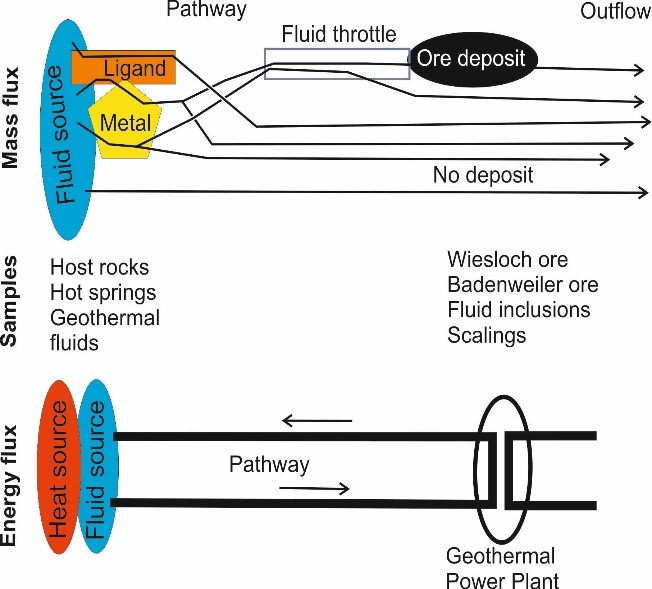Energy and mass flux in the Upper Rhine Graben (EMURG): a mineral systems approach to hydrothermal regimes in graben structures
- Ansprechperson:
- Förderung:
DFG grant KO2072/4-1
The project aims at deciphering energy and mass flux in a continental rift setting with the Upper Rhine Graben as case study. The goal is to develop a holistic model for metal enrichment in hydrothermal brines (hydrothermal vein type deposits and scalings in geothermal plants) including the provenances of the brines and its pathways. To reach these goals, recent geothermal fluids and scalings, sinter and young hydrothermal veins will be studied. The proposed study will be guided by the following hypotheses:
(i) The source of the high salinity is related to the influx of an external brine
(ii) The fluids responsible for sulfide ore precipitation in hydrothermal veins and in scalings of recent geothermal wells are identical
If hypothesis (i) is correct, the analysed fluid source tracers (element ratios and isotope signatures) will identify a sediment derived source of both recent and paleo fluids. If hypothesis (i) is not true, the tracers will probably indicate a crystalline basement source in which salinity is generated by desiccation processes.
If hypothesis (ii) is correct, we expect a clear and strong overlap in the chemical compositions of different recent wells and URG-related deposits. If not, processes have to be deciphered to explain the contrasting fluid composition leading to similar precipitates. Therefore, basic process understanding is required and will be generated in the EMURG project. Eventually, the information will help to establish additional options for the use of hot brines apart from geothermal energy in future times. Currently, pilot studies on Li-extraction are carried out, whereas further elements enriched in the brines will be targeted based on the geochemical data gathered during EMURG.

